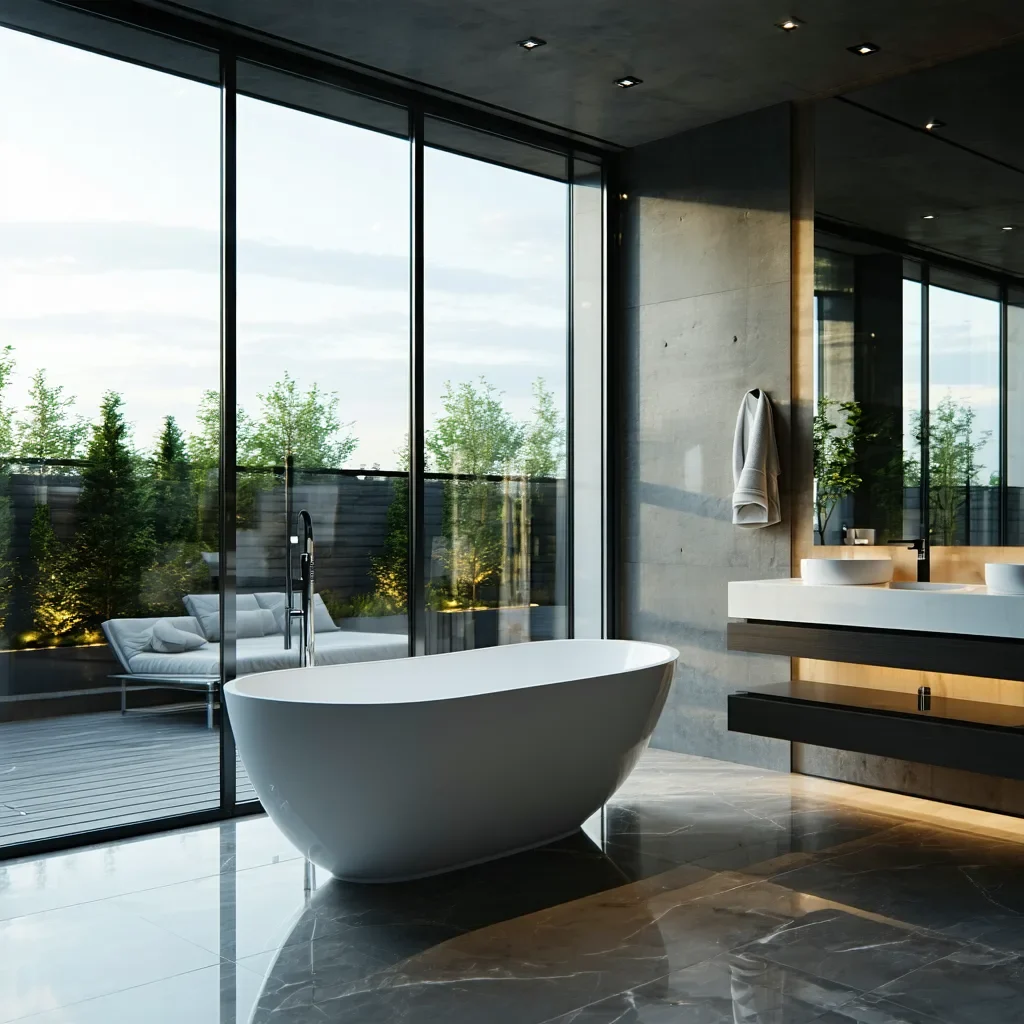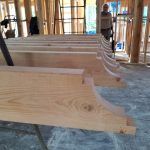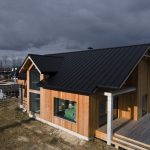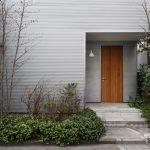
Uncover the Truth About Freestanding Tubs in 2025 Bathroom Design
Freestanding tubs in bathroom remodeling. When it comes to luxury and relaxation, few features make a stronger statement than a beautiful freestanding tub. But with evolving tastes and space constraints, many homeowners are wondering: are freestanding tubs in bathroom remodeling still trending in 2025?
The short answer: Yes—with a few caveats. Freestanding tubs continue to hold their place in high-end and spa-inspired bathroom remodels, but they’re now being chosen more thoughtfully based on space, function, and overall design intent.
In this blog, we’ll explore the popularity, pros and cons, and design considerations for freestanding tubs, helping you decide if this stunning centerpiece is right for your next remodel.
Why Freestanding Tubs Are Still Trending
Freestanding tubs remain a popular choice in bathroom remodeling for several compelling reasons:
- Aesthetic impact: They instantly elevate a bathroom’s elegance and sophistication
- Design flexibility: Available in a range of shapes, materials, and finishes
- Spa-like vibe: They create a sense of retreat and relaxation
- Visual openness: When placed correctly, they can make the room feel more spacious
Homeowners seeking a showstopping feature often turn to freestanding tubs in bathroom remodeling to anchor the design.
Design Trends for Freestanding Tubs in 2025
In 2025, the trend for freestanding tubs is shifting from size and extravagance to simplicity and harmony with the surrounding space. Popular design trends include:
1. Sculptural Simplicity
Organic, smooth curves and minimalist silhouettes are dominating. Think:
- Oval or egg-shaped tubs
- Matte white or stone finishes
- Slim edges for modern appeal
2. Statement Placement
Instead of being tucked in a corner, tubs are becoming visual centerpieces. Designers are placing them:
- In front of large windows
- Centered on textured feature walls
- On elevated platforms or under skylights
This approach enhances the impact of freestanding tubs in bathroom remodeling designs.
3. Matte Black & Earthy Finishes
While classic white tubs remain popular, bold finishes are trending. In 2025, expect to see:
- Matte black for contrast in minimalist bathrooms
- Textured stone or concrete tubs
- Natural copper or brass finishes for warmth and rustic charm
Pros of Freestanding Tubs in Bathroom Remodeling
If you’re thinking about incorporating a freestanding tub, here are the upsides:
- Visual appeal: They elevate even a simple design
- Versatility: Can work in modern, traditional, or eclectic settings
- No need for a built-in surround: Great for open space concepts
- Increased resale value: Buyers often associate them with luxury
For many, freestanding tubs are the focal point of the bathroom—functionally and aesthetically.
Cons to Consider
Despite their beauty, freestanding tubs aren’t for everyone. Here are a few considerations:
- Space requirements: They need open space around them for proper installation and visual balance
- Difficult to clean around: The gap between tub and wall can be tricky
- Less efficient for families: May not be ideal for bathing children
- May need additional plumbing work: Freestanding fixtures often require floor-mounted plumbing
Before choosing a freestanding tub, assess your space, lifestyle, and remodeling goals.
Are Freestanding Tubs Right for You?
Consider a freestanding tub if you:
- Want a spa-like retreat feel
- Have enough floor space for balance and access
- Don’t rely heavily on the tub for everyday family use
- Are prioritizing design and luxury in your bathroom
Skip it if your bathroom is small or if you need a multi-functional tub-shower combo for daily use.
Best Freestanding Tub Styles for 2025
Here are top styles that work well in modern remodels:
- Clawfoot Tubs – A timeless, vintage option making a small comeback in eclectic or rustic bathrooms
- Pedestal Base Tubs – Sleek and symmetrical, ideal for contemporary spaces
- Slipper Tubs – Raised backs provide more ergonomic comfort
- Japanese Soaking Tubs – Deep and compact, perfect for smaller bathrooms with a zen design
Each option offers a unique take on freestanding tubs in bathroom remodeling depending on your design goals.
Freestanding Tubs Remain a Stylish Statement in 2025
Freestanding tubs in bathroom remodeling remain a strong design choice in 2025, especially for those seeking a luxurious, spa-like atmosphere. While they aren’t suitable for every space or lifestyle, their sculptural beauty and design versatility continue to appeal to homeowners looking to elevate their bathroom’s aesthetic. The key is thoughtful integration—balancing space, function, and visual impact. Whether your style is minimalist or rustic, the right freestanding tub can serve as both a centerpiece and a sanctuary.
Transform Your Bathroom with a Freestanding Tub
At Mazzamuto Construction, we believe great spaces start with thoughtful planning and skilled craftsmanship. Whether you’re exploring ideas or ready to build, our team is here to guide you every step of the way. Let’s bring your vision home—reach out for a personalized consultation today!
Frequently Asked Questions
1. Are freestanding tubs going out of style?
No, freestanding tubs remain stylish in 2025. However, strategic placement is key, considering both the available space and the overall bathroom design. Homeowners are prioritizing visual harmony and functionality over simply incorporating the trend.
2. How much space do I need for a freestanding tub?
Plan for at least six inches of clearance around the entire tub’s perimeter. This space ensures easy cleaning access and contributes to a visually balanced aesthetic within the bathroom. Adequate spacing prevents a cramped feeling and enhances the tub’s presence.
3. Are freestanding tubs more expensive to install?
Installation can be pricier. Freestanding tubs often necessitate specialized plumbing work as the pipes aren’t concealed in a wall. Reinforcing the floor might also be required depending on the tub’s weight and the existing structure, adding to overall costs.
4. Can I put a shower over a freestanding tub?
While technically possible, it’s generally discouraged. Freestanding tubs lack the design features of traditional tubs needed for shower enclosures or effective water containment, potentially leading to leaks and an awkward user experience, negating its intended purpose.
5. What’s the best material for a freestanding tub?
Acrylic is affordable and lightweight, while solid surface options offer similar benefits. For luxurious durability, consider stone resin or classic cast iron. Your choice will depend on your budget, desired aesthetic, and tolerance for weight and maintenance.
Key Takeaways
- Freestanding tubs in bathroom remodeling continue to trend in 2025
- They offer luxurious aesthetics but require space and thoughtful planning
- Current trends favor organic shapes, natural textures, and bold finishes
- While elegant, they may not suit all household needs or small bathrooms
- Work with professionals to assess if a freestanding tub enhances your overall remodel goals




